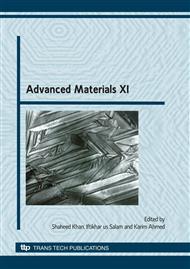p.398
p.404
p.415
p.422
p.431
p.438
p.445
p.453
p.462
Software Development for Shear Stress Distribution in Multicell Beams of Isotropic Materials
Abstract:
Main purpose of this work is to present the constrained torsional loading of multicell beam of isotropic materials in a user friendly format, using the computer programming. This computer program has been written in Microsoft Visual Basic, and its source code consists of 593 lines. Distribution of Saint Venant shear stresses in multicell beam of isotropic material has been calculated. Importance of shear stress in processing of materials has been discussed. The design and development of this software has also been enlightened by providing Algorithm and flow chart in paper. Although this software is restricted to multicell beam of three cells, yet future versions can have ability to address more complicated shapes and cases of multicell beams. Software also describes nomenclature and mathematical formulas applied to help user understand the theoretical background. The geometry of multicell beam is defined for three cells. Four main sections of software are; input data, intermediate calculations, numerical results and graphical output. The results of this software have been verified using MATLAB. Different contour displays indicating magnitude and direction of stress and displacement are plotted in MATLAB for multicell beam of isotropic material. MSC Patran has also been utilized to get the results for multicell beam of isotropic materials for comparison and validation. Development and use of this software provides inspiration to highlight new areas of consideration and research.
Info:
Periodical:
Pages:
453-461
Citation:
Online since:
June 2010
Authors:
Price:
Сopyright:
© 2010 Trans Tech Publications Ltd. All Rights Reserved
Share:
Citation:


